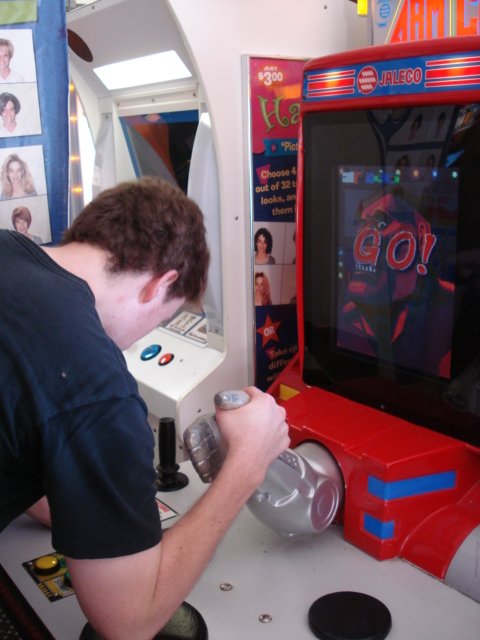
The kids like Busch Gardens because of the roller-coasters. I like them too, but good amusement parks are places where you see experimental urban planning techniques and methods of cueing control. First the amusments.
Along side is Espen arm wresting the machine. He won, but it still cost 50 cents.
We went on the new ride called the Griffon. It has a fantastic vertical drop. Roller-coasters keep getting better. I recall the first time I went to Busch Gardens about twenty years ago. The best they could do back then was the Loch Ness Monster. My favorite is Apollo’s Chariot because you feel like you are going to fly out when you hit the high points.
The park is designed around a European theme. They have Italy, Germany, England, Ireland and France. Busch Gardens in Florida has an Africa theme.
Below is the Ireland part of Busch Gardens.
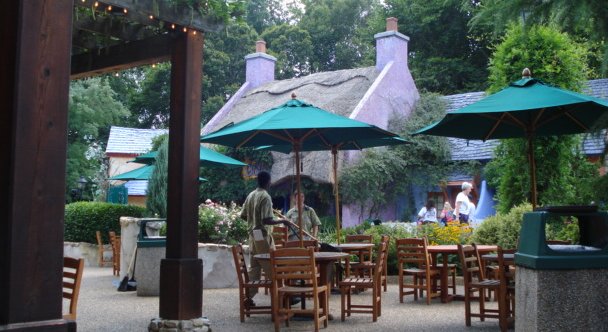
Now for the urban planning. Amusement parks create the illusions of space and distance. They do this by using travel time and changes of venue. Most of us cannot measure straight line distance very well. Instead, we use the proxies of time and effort. We also notice changes in scenery, especially when we pass through some kind of threshold such as a bridge, arch or gate. When you walk between and among the various parts of a well designed park, you never get to go the straight line. You often have to take some kind of transportation, usually a train, that makes it seem like you are embarking on a journey. You also cross a lot of thresholds. Bridges, arches and gates are placed strategically to make you think you have entered a different place. It works.
Below – there are nice gardens at Busch Gardens. One reason I like that park is that it is pretty.
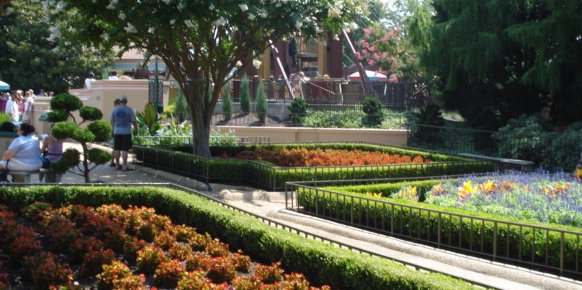
Amusement parks are some of the places where various methods are best applied, but they are the basis of all good urban and park planning. I read a very good book re called A Pattern Language where the authors tried to figure out the patterns that make landscapes and cities pleasant. The book is full of suggestions that apply across cultures. I found a website re. You have to be member to get all the benefits, but it has some nice picture.
Below are Espen and Alex, practicing their usual looks, in Busch Gardens England.

At the risk of sounding like a philistine, IMO most great cities have that amusement park atmosphere and were essentially built with that same idea in mind. That is why people like to go there. Go to Venice, the Vatican, Paris or Vienna and tell me you cannot see that. It is just that in those days the amusements were for the princes and fat cats. At first I just thought amusement parks copied these places, but the closer I looked the more I understood that these were indeed amusement parks only on a grander scale and had developed more snob-appeal from just being around a long time. Just as in a modern Disney World or Busch Gardens, patronage allowed architects, engineers and artists to experiment with new forms. If the popes or the Medici could have built a roller coaster, they would have had one. Imagine them whooping it up on the drop. A roller coaster is a wonder of engineering and physics and requires an understanding of human perceptions and psychology. It is no small thing, physically or intellectually. I don’t doubt that Leonardo da Vinci designed one or two of them, but like the other things he drew, they didn’t go into production.
Below is the wisteria. Grows fast. Notice the arch as you pass from one section to the next.
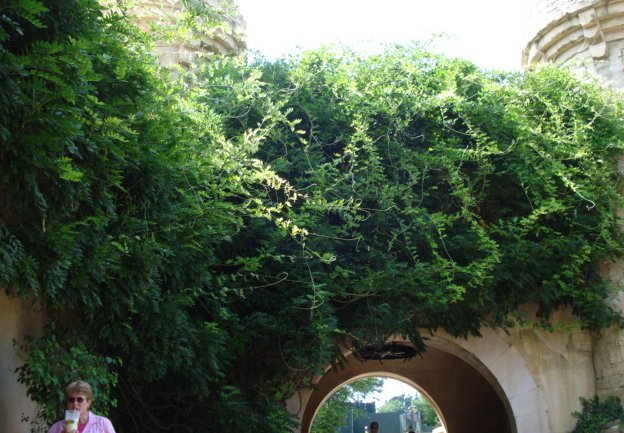
For example, a path with uneven width (i.e. with wider spots and curves) is more appealing than a straight road. People all over the world like structures with galleries or porches. A well designed house offers a transition area from outside space to inside space. We are attracted to houses with a sheltering roof. A room with a corner with windows on both walls is nicer than one with windows only on one. Most of the things are obvious WHEN they are pointed out. Unfortunately, many of our modern cities violate almost all the precepts of a comfortable place to live. In recent years, we have designed our cities for the convenience of the automobile and make humans second class inhabitants in our cities. It doesn’t have to be that way and we can learn from what they do at quality amusement parks and public gardens.
Below is Busch Garden’s Italian street.
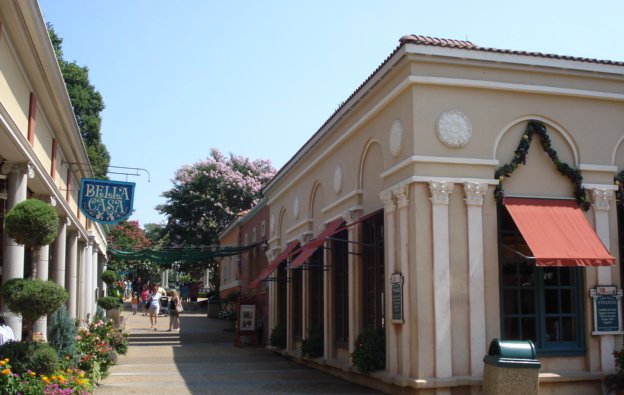
Some communities are being designed with the human principle in mind. Unfortunately, they tend to be only upscale places where ordinary people cannot afford to live. They also tend to run up against zoning rules. Recently, we also have the added permutation of the Americans with Disabilities Act. Most of the nicest places in my favorite cities such as Krakow, Vienna or Istanbul would never pass the tests of accessibility. In theory, you could build a neighborhood as charming as some of those we find in great old cities, but modern rules would not permit it. However, you might be able to get an erzatz version as in Busch Gardens. That is not so bad.
Below are Alex and Espen entering the German section. Notice again the distinct entry.

Re housing, I read an article in this month’s Wilson Quarterly about housing. The author was Witold Rybczynski, who wrote a very good book called City Life that I read a couple years ago. Witold Rybczynski says that housing is so expensive because of all the restrictions governments place on land use and building requirements. Places where the red tape is the strongest, such as the New England and the West Coast, have much higher home prices. It is not simply a matter of greater demand, but also of artificially restricted supply. Builders are complicit in this, although you can see why they would be almost forced to do it. If a parcel of buildable land costs a lot, it just makes sense to build a big, expensive house there to make it worth the effort. Many people have more house than they need, but they have been convinced that they need even more. I recommend both the article and the book. Unfortunately, neither is available online, so you have to look at them in the old fashioned paper way (Wilson Quarterly is worth the subscription, BTW), but I did find a good interview with author.
Below is Roman Rapids at Busch Gardens. You get wet, but it was hot so good. Only Alex and I went. Mariza took the picture. Espen paid a quarter to try to squirt us from the side, but missed.

PS – this is a little off topic, but as long as we are talking re things that make life work, I also found a good article re freshwater. This is the link.
Below – the kids don’t like to have their pictures taken.

IMO – the recuperation part of R&R is getting a chance to think about things besides work, so this is what I have been doing.

Above – Mariza and Sponge Bob.
Below – Espen got a gum package that gave a shock when you tried to take one. He couldn’t understand why he got no takers. We are all suspicious of him bearing gifts.

